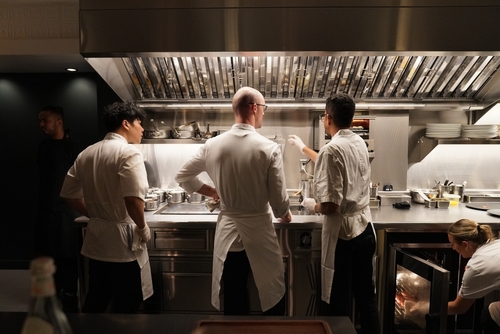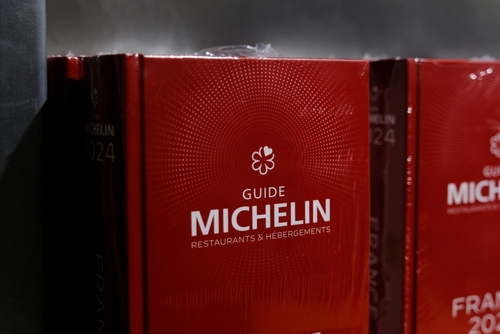The red Michelin guide sits on restaurant tables worldwide, but few diners fully understand the prestige behind those coveted stars. A Michelin star represents the pinnacle of culinary achievement—a recognition that can transform a chef’s career overnight and elevate a restaurant from local favorite to international destination.
Understanding what a Michelin star means helps you appreciate the dedication, skill, and artistry behind exceptional dining experiences. Whether you’re planning a special celebration or simply curious about fine dining, this guide explains everything you need to know about the world’s most influential restaurant rating system.
The Michelin star system operates on a simple three-tier scale, but earning even one star requires extraordinary commitment to culinary excellence. Let’s explore how this prestigious system works and what it means for restaurants and diners alike.
The History Behind Michelin Stars
The Michelin star system began in 1900 when tire company founders André and Édouard Michelin created a guidebook to encourage car travel in France. Their original guide included practical information like gas stations, repair shops, and restaurants to help drivers navigate the country’s roads.
The familiar star rating system launched in 1926. Michelin inspectors began awarding stars to recognize exceptional restaurants, creating a standard that would eventually influence dining culture worldwide. The tire company’s investment in restaurant ratings proved brilliant—encouraging travel naturally increased tire sales while establishing an authoritative voice in culinary excellence.
Today, the Michelin Guide covers 40 countries and territories across four continents. What started as a marketing tool has become the most respected restaurant rating system globally, with the power to make or break culinary careers.

Understanding the Three-Star System
The Michelin star system uses three levels to rate restaurants, each representing a specific standard of excellence:
One Star: High-Quality Cooking Worth a Stop
A one-star rating indicates “high-quality cooking that is worth a stop.” These restaurants demonstrate exceptional technique, quality ingredients, and consistent execution. The food shows clear skill and attention to detail, making the restaurant a worthy destination for food enthusiasts.
Two Stars: Excellent Cooking Worth a Detour
Two-star restaurants offer “excellent cooking that is worth a detour.” These establishments showcase exceptional technique, creativity, and ingredient quality that justifies going out of your way to visit. The dining experience typically includes refined service and atmosphere alongside outstanding food.
Three Stars: Exceptional Cuisine Worth a Special Journey
The highest rating, three stars, represents “exceptional cuisine that is worth a special journey.” These rare restaurants offer extraordinary culinary experiences that justify traveling specifically to dine there. Three-star establishments demonstrate mastery, innovation, and consistency at the highest level.
How Michelin Inspectors Evaluate Restaurants
Michelin employs full-time inspectors who visit restaurants anonymously and pay for their meals. These trained professionals evaluate restaurants based on five key criteria:
Ingredient Quality: Inspectors assess the freshness, sourcing, and overall quality of ingredients used in dishes. Premium ingredients handled with care form the foundation of Michelin-worthy cuisine.
Cooking Technique: The mastery of fundamental cooking methods and innovative techniques demonstrates a chef’s skill level. Proper execution of complex preparations separates exceptional restaurants from merely good ones.
Harmony of Flavors: Dishes must show balance and coherence in taste, texture, and presentation. Each element should complement others to create a unified culinary experience.
Personality in Cuisine: Restaurants must demonstrate a distinct culinary identity that reflects the chef’s vision and creativity. Generic or imitative cooking rarely earns recognition.
Consistency: Multiple visits ensure restaurants maintain high standards across different meals and occasions. Inconsistency can result in losing stars as quickly as earning them.
Inspectors typically visit restaurants multiple times before making recommendations. This thorough evaluation process ensures ratings accurately reflect the dining experience guests can expect.
The Impact of Earning Michelin Stars
Receiving Michelin stars transforms restaurants in profound ways. The recognition brings immediate prestige and often leads to increased reservations, higher prices, and international attention.
For chefs, earning stars can define careers. Many culinary professionals dedicate years pursuing this recognition, viewing it as validation of their skills and creative vision. The pressure to maintain standards can be intense—some chefs report stress and anxiety from the responsibility of upholding their restaurant’s reputation.
The business impact extends beyond recognition. Starred restaurants often see revenue increases of 20-30% following their first star. Two and three-star establishments can command premium prices and attract culinary tourists from around the world.
However, the system isn’t without controversy. Critics argue the standards favor French cuisine and traditional fine dining over innovative or culturally diverse approaches to food. Some chefs have even returned their stars, citing pressure and constraints on creativity.
Beyond Stars: Other Michelin Recognitions
Michelin awards other distinctions alongside stars:
Bib Gourmand: Recognizes restaurants offering good food at moderate prices. These establishments provide excellent value without the formality or expense of starred restaurants.
Green Stars: A recent addition highlighting restaurants with outstanding commitment to sustainability. These awards recognize environmental responsibility in sourcing, waste reduction, and overall operations.
Young Chef Awards: Celebrates promising culinary talent under 35 years old, recognizing the next generation of exceptional chefs.
These additional categories acknowledge that culinary excellence takes many forms and price points.
Planning Your Michelin-Starred Dining Experience
Dining at Michelin-starred restaurants requires preparation. Reservations often book months in advance, especially for three-star establishments. Many restaurants require deposits or prepayment for tasting menus.
Expect higher prices reflecting the quality of ingredients, skilled preparation, and refined service. One-star restaurants typically offer more accessible pricing, while three-star establishments represent significant culinary investments.
Dress codes vary but lean toward smart casual or formal attire. Research specific restaurant policies to ensure your visit meets their standards.
The Global Reach of Michelin Recognition
The Michelin Guide now covers major culinary destinations worldwide, from Tokyo’s record-breaking number of starred restaurants to emerging food scenes in cities like Bangkok and Mexico City. This expansion recognizes diverse culinary traditions while maintaining consistent standards.
Each new market brings unique challenges as inspectors learn local ingredients, techniques, and dining customs. The guide’s international growth demonstrates how exceptional cooking transcends cultural boundaries while celebrating regional specialties.
Making Your Michelin Journey Worthwhile
Understanding what Michelin stars represent helps you make informed dining choices. These awards recognize genuine culinary excellence achieved through skill, creativity, and dedication. Whether you’re celebrating a special occasion or exploring fine dining, starred restaurants offer experiences crafted by some of the world’s most talented chefs.
The Michelin system provides reliable guidance for exceptional dining, but remember that culinary enjoyment remains personal. A one-star neighborhood gem might create more memorable moments than a three-star temple to gastronomy. Use the guide as a starting point for culinary adventures that match your preferences and budget.
Start exploring Michelin-starred restaurants in your area or plan visits during travels. Each meal offers insight into the artistry and passion behind these coveted awards.
